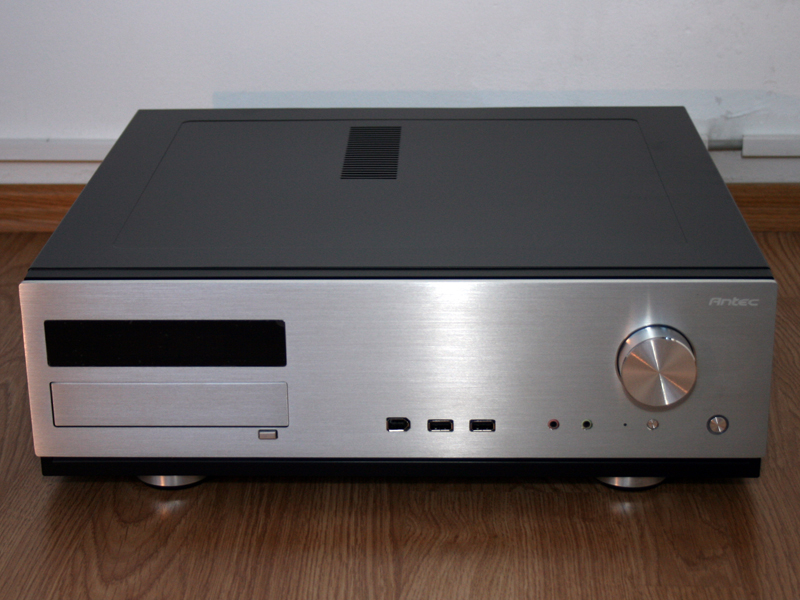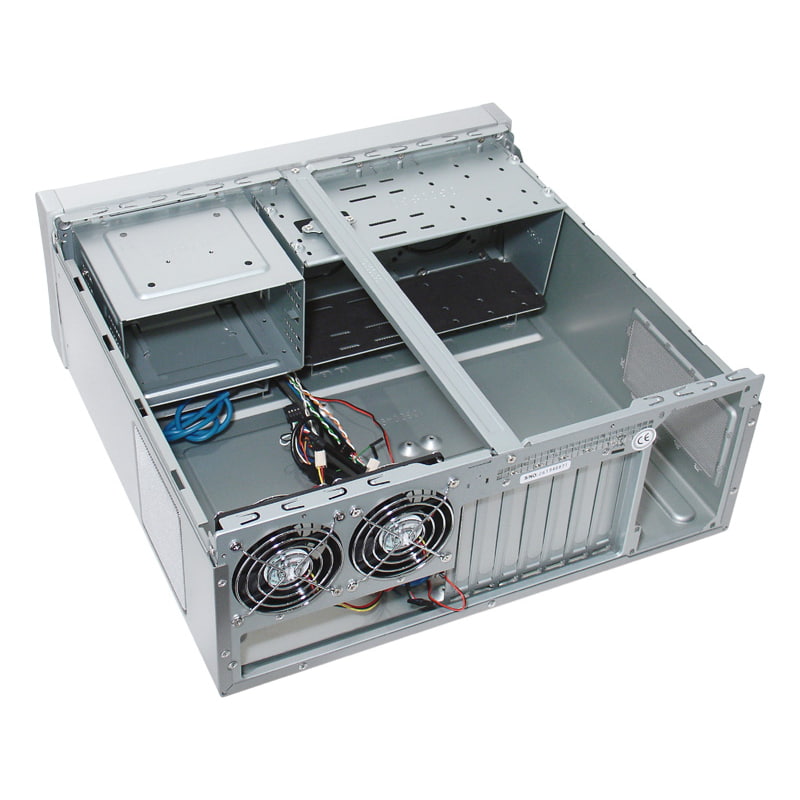Hello
I'm planning on building myself an HTPC/SteamOS box. I'm not bothered too much about epic gaming performance because I'm planning on building a heavy lifter later on (awaiting the new AMD Zen core) and using Steam's game streaming features to play games in the lounge that are being rendered in the office (cool stuff)
So anyway with much deliberation I have come to the conclusion that AMD's 7870k apu, coupled with some good quality, high performance memory will be more than adequate. I don't believe I have any real need for a discrete GPU to gain the performance levels that I want.
The biggest issue is to do with cooling.
So I'm building a completely custom chassis anyway, a good friend of mine is a mechanical design engineer and has contacts in the industry to get the panels laser cut, brushed and anodised relatively cheaply. None of the mini-itx cases out there, except perhaps the Node 202, looks like it belongs in the TV cabinet. My idea is for a chassis that looks right at home next to the BluRay player and the 5.1 amplifer whilst still looking really cool - I'm thinking brushed black aluminium top and sides and a zebrawood veneered face
I want it to be as shallow as possible, as close to 7cm as can be. I also want it to be almost silent.
So yea I'm pretty much asking for a gold-plated unicorn that speaks 6 languages.
I've seen a number of CPU coolers that look good, most of all the Zalman 8900 which is both low profile, high performance and quiet.
An alternative that I had considered was the Corsair H60. Bear with me on this.
I was thinking that I could place the rad sideways, beside the motherboard (on the right or left), upside down. so the fan blows air upwards through the rad, drawing air in through vents on the bottom of the case (which will stand up on rubber feet approx 10mm high) and out through vents on the top of the case. The hoses then come out the bottom of the rad, get curved up through a gap between the rad and the motherboard, twisted over and down onto the pump housing/block. so looking front on, the hoses would go from rad to apu in a tilda shape: ~
Can anyone comment on the flexibility of the H60 hoses? What's the minimum radius I can curve the hoses at without kinking them?
So this is a crazy idea I know, and the H60 has a terrible reputation for cooling performance. BUT.
My thought is this - cooling performance of an H60, although bad compared to cheaper, really big air coolers is likely to be better than the colling performance of the Zalman - can anyone comment on that? I am thinking the Zalman will offer no room for O/C whatsoever.
I'm also thinking that it is likely to be quieter than the Zalman - can anyone comment on that too?
I know that the addition of the rad will increase the overall size of the case, but at the same time it should allow the case to remain fairly shallow whilst still maintaining a (hopefully) very good heat transfer to noise ratio.
Bearing in mind that the end goal here is an Extremely Premium feel to the chassis; a relatively heavy machine that still feels compact with an abolutely minimal noise level is very important to me.
I think the Zalman would require a slightly taller chassis than the H60 but would not require such high-off-the-ground rubber feet. I also think that the H60 would provide more effective cooling but natually would require a bigger chassis overall.
Does anyone have any experience with these cooling options that would help in my decision making process??
I notice at the end of wriitng this that Zalman also offer an 'extreme' edition of their cooler which features a fan with a higher top speed - naturally this would be more effective at cooling with a higher noise level. In real world terms, how loud is 25 dba? or 35 for that matter?
Thanks very much for reading thus far!
B
I'm planning on building myself an HTPC/SteamOS box. I'm not bothered too much about epic gaming performance because I'm planning on building a heavy lifter later on (awaiting the new AMD Zen core) and using Steam's game streaming features to play games in the lounge that are being rendered in the office (cool stuff)
So anyway with much deliberation I have come to the conclusion that AMD's 7870k apu, coupled with some good quality, high performance memory will be more than adequate. I don't believe I have any real need for a discrete GPU to gain the performance levels that I want.
The biggest issue is to do with cooling.
So I'm building a completely custom chassis anyway, a good friend of mine is a mechanical design engineer and has contacts in the industry to get the panels laser cut, brushed and anodised relatively cheaply. None of the mini-itx cases out there, except perhaps the Node 202, looks like it belongs in the TV cabinet. My idea is for a chassis that looks right at home next to the BluRay player and the 5.1 amplifer whilst still looking really cool - I'm thinking brushed black aluminium top and sides and a zebrawood veneered face
I want it to be as shallow as possible, as close to 7cm as can be. I also want it to be almost silent.
So yea I'm pretty much asking for a gold-plated unicorn that speaks 6 languages.
I've seen a number of CPU coolers that look good, most of all the Zalman 8900 which is both low profile, high performance and quiet.
An alternative that I had considered was the Corsair H60. Bear with me on this.
I was thinking that I could place the rad sideways, beside the motherboard (on the right or left), upside down. so the fan blows air upwards through the rad, drawing air in through vents on the bottom of the case (which will stand up on rubber feet approx 10mm high) and out through vents on the top of the case. The hoses then come out the bottom of the rad, get curved up through a gap between the rad and the motherboard, twisted over and down onto the pump housing/block. so looking front on, the hoses would go from rad to apu in a tilda shape: ~
Can anyone comment on the flexibility of the H60 hoses? What's the minimum radius I can curve the hoses at without kinking them?
So this is a crazy idea I know, and the H60 has a terrible reputation for cooling performance. BUT.
My thought is this - cooling performance of an H60, although bad compared to cheaper, really big air coolers is likely to be better than the colling performance of the Zalman - can anyone comment on that? I am thinking the Zalman will offer no room for O/C whatsoever.
I'm also thinking that it is likely to be quieter than the Zalman - can anyone comment on that too?
I know that the addition of the rad will increase the overall size of the case, but at the same time it should allow the case to remain fairly shallow whilst still maintaining a (hopefully) very good heat transfer to noise ratio.
Bearing in mind that the end goal here is an Extremely Premium feel to the chassis; a relatively heavy machine that still feels compact with an abolutely minimal noise level is very important to me.
I think the Zalman would require a slightly taller chassis than the H60 but would not require such high-off-the-ground rubber feet. I also think that the H60 would provide more effective cooling but natually would require a bigger chassis overall.
Does anyone have any experience with these cooling options that would help in my decision making process??
I notice at the end of wriitng this that Zalman also offer an 'extreme' edition of their cooler which features a fan with a higher top speed - naturally this would be more effective at cooling with a higher noise level. In real world terms, how loud is 25 dba? or 35 for that matter?
Thanks very much for reading thus far!
B







 maybe something like an AMD carrizo based laptop which I can cannibalise
maybe something like an AMD carrizo based laptop which I can cannibalise 